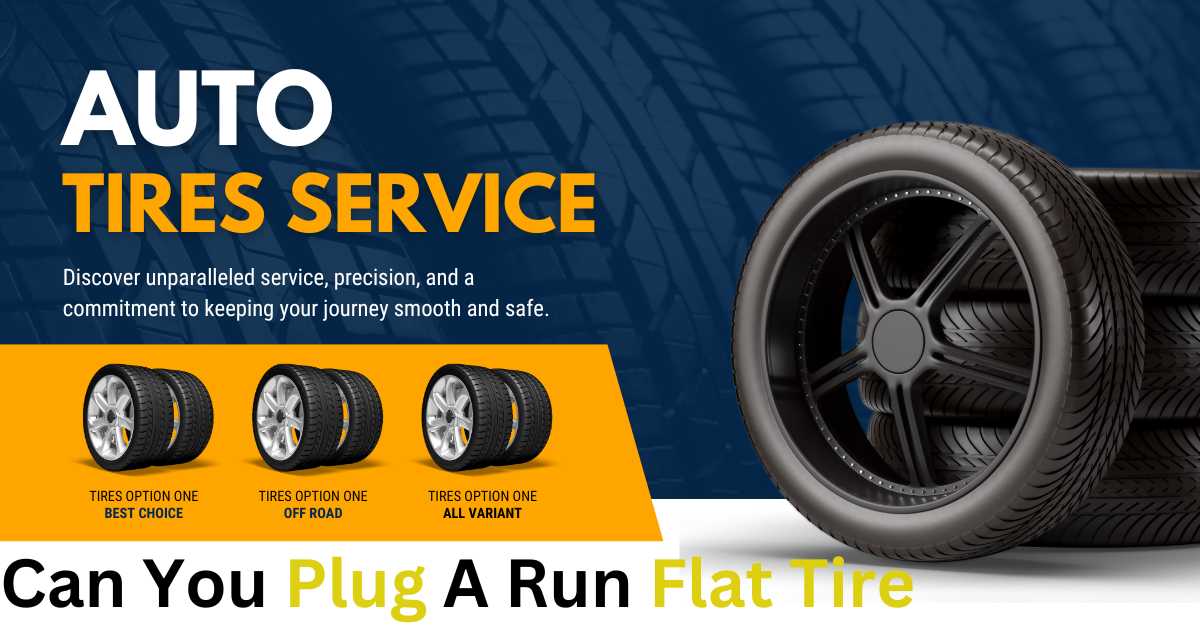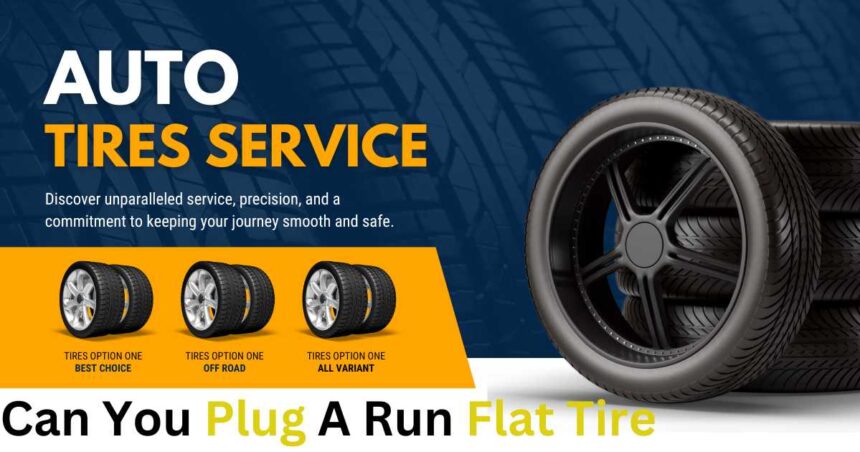Can You Plug A Run Flat Tire: Getting a flat tire can really mess up your trip, but with run-flat tires, you might be able to keep going. These special tires have extra-strong sidewalls, so if you get a flat, you can still drive for a bit at lower speeds to get to a repair shop. But what if you just have a small hole? Can you use a plug to fix a run-flat tire quickly?
Well, it’s not that simple. Let’s talk about fixing run-flat tires, looking at the different choices, possible problems, and the safest way to handle it.
Can You Plug A Run Flat Tire
Understanding Run-Flat Technology
Run-Flat tires are kind of like superheroes. They’re built in a special way so that even if you get a hole in them, they can still hold up and you can keep driving for a bit. This means you can go for a short distance, usually about 50 miles or 80 kilometers, at slower speeds, like around 50 mph or 80 km/h, until can get to a shop fix them properly.

Plugging Vs. Patching: Decoding The Repair Methods
Plugging: This is a fast and easy fix for small holes in regular tires. You stick a rubber stem with sealant into the hole from the inside. But remember, it’s just a temporary solution.
Patching: This is a stronger, more long-lasting fix. It involves putting a patch on both the inside and outside of the tire where the hole is. It creates a better seal than just a plug.
Can You Plug A Run-Flat Tire? Weighing The Risks And Recommendations
Here’s why saying that you can always plug run-flat tires might not be accurate:
Manufacturer’s Advice: Many companies that makes run-flat tires say not to use plugs because of how these tires are made. Plugging them could make the special sidewalls weaker, which might be dangerous. So, it’s best to follow what the tire maker says in your car’s manual.
How Bad The Damage Is: Plugs are usually just for small holes in the main part of the tire. If your run-flat tire has big damage to the sidewalls or a large hole in the tread, plugging might not work well.
Quick Fix Vs. Long-Term Solution: Even though plugging seems like a fast way to fix a tire, it might not be good for run-flat tires in the long run. These tires need to stay strong, so a permanent patch is usually a better idea.
How Many Miles Before New Tires
A Limited Scenario For Plugging Run-Flat Tires
There’s only a small situation where plugging a run-flat tire might work, but you need to be careful:
Tiny Tread Holes: If the hole is really tiny and only in the main part of the tire, some experts think plugging might help for a little while. But most tire makers don’t suggest this, so it’s best to get it checked by a pro as soon as you can.
Why Patching Is Generally Preferred For Run-Flat Tires
Even though plugging a run-flat tire is rare, patching has some good points:
Better Seal: Patching makes a stronger and more dependable fix than plugging, which is really important for keeping run-flat tires strong.
Follow The Maker’s Advice: It’s safest to do what the tire company says about fixing their tires. They know how their tires are made best.
The Safest Course Of Action: Seek Professional Help
Here’s what to do if your run-flat tire needs fixing:
Check Your Manual: Look in your car’s manual for advice on fixing run-flat tires for your specific car.
Get professional Help: Don’t risk it with run-flat tires. Have a tire expert check the damage and decide if it needs patching, plugging (only in rare cases), or if you need a new tire.
Think About Replacing: If the damage is big or the tire maker says not to patch it, it might be safest to get a new run-flat tire. This way, you make sure your tire works well and keeps you safe.
Plugging a regular tire with a small hole might work, but it’s not the best idea for run-flat tires. It could make the tire weaker and less safe. If your run-flat tire gets a hole, focus on safety. Check your car’s manual and get a pro’s help to fix it right. They’ll know what’s best for your tire and keep you safe.






